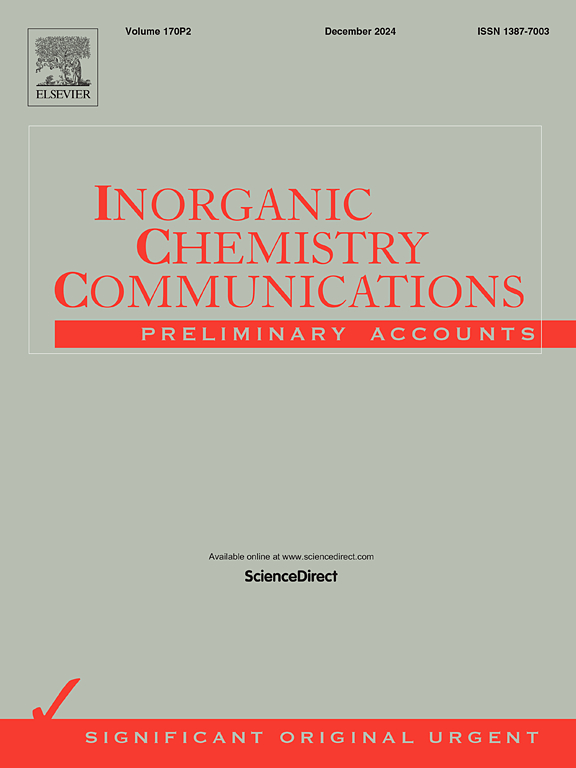Fabrication of novel S-type In2S3/Ag2S heterostructures with superior photocatalytic and electrochemical characteristics for remediation of organic contaminants in water
IF 4.4
3区 化学
Q1 CHEMISTRY, INORGANIC & NUCLEAR
引用次数: 0
Abstract
In the present report, In2S3/Ag2S heterojunctions were created hydrothermally and characterized for their crystalline structure, morphology, composition, optical characteristics, charges reunification and property of charge by standard analytical techniques. Synthesized nanomaterials were utilized for the decontamination of organic pollutants such as Rhodamine B (RhB) dye and antibiotic ciprofloxacin (CP) by using visible light radiance. Calculated photocatalytic removal efficacy for RhB and CP over In2S3/Ag2S nanocomposite was 99.95 % in 40 min and 99.49 % in 140 min respectively which is 1.98 and 1.21 times greater than In2S3 alone. Maximum removal efficiency was achieved for In2S3/Ag2S (3 wt%) composition. The enhanced activity is attributed to the greater absorption of visible light and construction of S-type heterojunction which are more efficient for light induced charge separation and therefore decrease the reunification of hole-electron carriers. Density functional theory (DFT) analysis also supported that the nanocomposite is energetically favorable, stable and show significantly electronic and photocatalytic properties. In2S3/Ag2S (3 wt%) nanocomposite achieved excellent photocatalytic stability towards the removal of RhB and CP even after five runs. In2S3/Ag2S (3 wt%) nanocomposites showed maximum photocatalytic activity in acidic medium. Effect of trapping agents towards removal of CP and RhB were conducted and results showed that.O2− radical play dominant role as active species in comparison to ⋅OH radical and holes. Plausible mechanism of transfer of charge in In2S3/Ag2S and removal of pollutants is also represented. Owing to their unique features, novel In2S3/Ag2S heterojunctions exhibits as an exceptionally effective photocatalyst for removal of pollutants and it would display the promising utilization towards wastewater treatment.

求助全文
约1分钟内获得全文
求助全文
来源期刊

Inorganic Chemistry Communications
化学-无机化学与核化学
CiteScore
5.50
自引率
7.90%
发文量
1013
审稿时长
53 days
期刊介绍:
Launched in January 1998, Inorganic Chemistry Communications is an international journal dedicated to the rapid publication of short communications in the major areas of inorganic, organometallic and supramolecular chemistry. Topics include synthetic and reaction chemistry, kinetics and mechanisms of reactions, bioinorganic chemistry, photochemistry and the use of metal and organometallic compounds in stoichiometric and catalytic synthesis or organic compounds.
 求助内容:
求助内容: 应助结果提醒方式:
应助结果提醒方式:


